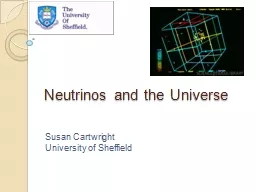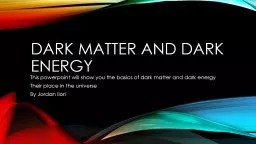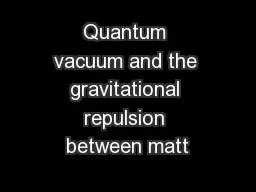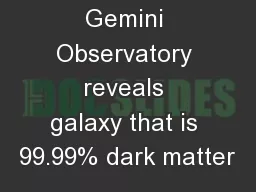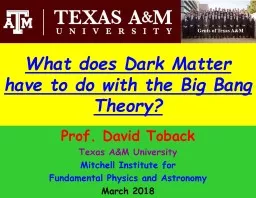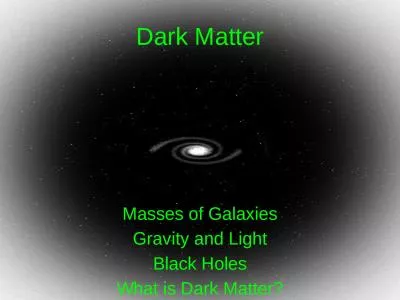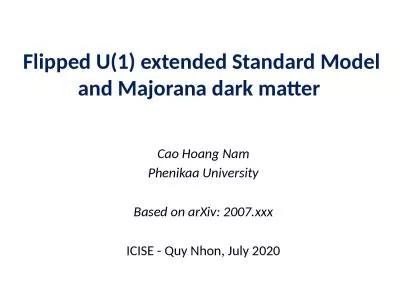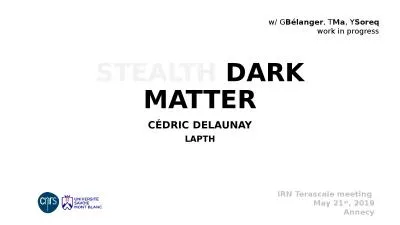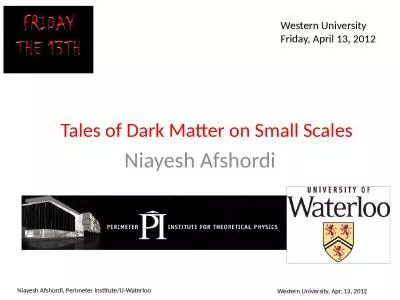PPT-Dark Matter
Author : trish-goza | Published Date : 2016-03-30
Axion Dark Matter Georg G Raffelt MaxPlanck Institut f ür Physik München Physics Colloquium University of Sydney 3 March 2014 Axions as Cold Dark Matter of
Presentation Embed Code
Download Presentation
Download Presentation The PPT/PDF document "Dark Matter" is the property of its rightful owner. Permission is granted to download and print the materials on this website for personal, non-commercial use only, and to display it on your personal computer provided you do not modify the materials and that you retain all copyright notices contained in the materials. By downloading content from our website, you accept the terms of this agreement.
Dark Matter: Transcript
Download Rules Of Document
"Dark Matter"The content belongs to its owner. You may download and print it for personal use, without modification, and keep all copyright notices. By downloading, you agree to these terms.
Related Documents


